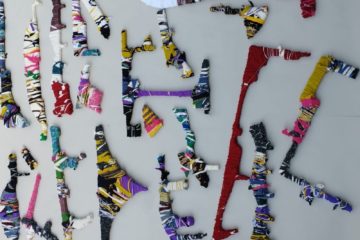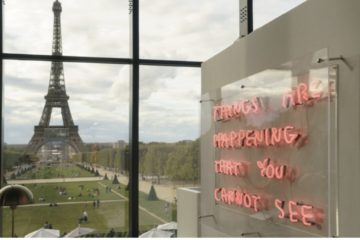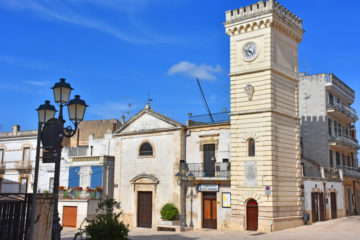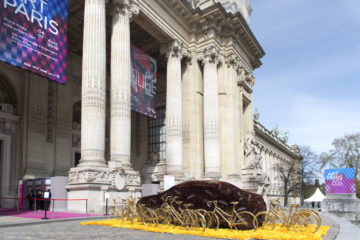LOUISE BOURGEOIS, PASSAGE DANGEREUX – HAMBURGHER KUNSTHALLE
Louise Bourgeois
Passage dangereux
10 February to 17 June 2012
Hamburger Kunsthalle, Hubertus-Wald-Forum

Press conference: Thursday, 9 February 2012, 11 a.m.
Opening: Friday, 10 February 2012, 7 p.m.
The Hamburger Kunsthalle will be honoring an artist of the century with an exhibition: Louise Bourgeois (1911-2010). On the occasion of her 100th birthday, the Hamburger Kunsthalle will be showing sculptures, installations, etchings, tapestries and works made of fabric from the last 15 years of her life.
The work of one of the most important and influential artists of our age manifests a very exceptional formal and material language. It deals with existential subject matter and at the same time very personal experiences that Bourgeois tirelessly pursued throughout her life and practice: fear, dependency, memory, sexuality, love and death. The works on view are on loan from renowned international museums, private collections and the Louise Bourgeois Trust. Several of the works are being exhibited for the first time ever.
For more than four months, the famous Maman (1999) – a 9 meters high, oversized spider in bronze, steel and marble – will stand outside of the Hamburger Kunsthalle as a highly visible ambassador to the exhibition. As fearsome as it is impressive, this monumental sculpture is one of Louise Bourgeois’ key works. The title Maman (mother) points to the fact that Bourgeois understood this work to be a homage to her mother, who worked as a restorer of tapestries. At the same time, the tireless restoring and rebuilding of woven material, which is also characteristic of the spider, also becomes a symbol for endless, always repeating and ever-renewing life in general.
Included among the many room-encompassing, multi-segment works on view is the large scale, fourteen- part series of etchings À l’infini (2008), from the collection of the Museum of Modern Art in New York which will be presented in Germany for the first time. The MoMA was the museum that devoted a retrospective to Louise Bourgeois in 1982 – as the first female artist ever to be honored with a retrospective by the museum. Each of the individual sheets in À l’infini shows intersecting and knotting lines that come to form new shapes, something like a loving couple.
Several of the rooms in the exhibition are devoted to works made of cloth, where the threads become patterns and independently come to create abstract formations of great beauty. To think of the weavings as a story that can continue to be spun further and further, as threads of memory winding through the path to the past – this is the understanding that shaped the artistic life of Louise Bourgeois.
The exhibition title Passage dangereux is taken from the name of a piece from one of Bourgeois’ most spectacular bodies of work, her so-called Cells, cage-like spaces filled with objects and small sculptures. Passage dangereux (1997) is the largest and most spectacular of these cells, and enables the viewer to experience the artist’s in-depth investigation of her own personal history – but also broader human memories and emotions – in a very condensed way.
Louise Bourgeois embodied many epochs in her 98-year-old life and in the never dwindling intensity of her artistic creativity: Born in Paris, she experienced the Parisian Modernists as a young woman, studied under Fernand Léger among others and moved in Surrealist circles. In 1938 she moved with her husband, the American art historian Robert Goldwater, to New York. There she came into contact with other French artist émigrés surrounding Marcel Duchamp and befriended the key players in Abstract Expressionism. Though Bourgeois appreciated the dominant U.S. tendencies towards Minimalism and Pop Art, she never became affiliated with one of the existing groups. Instead Bourgeois developed her own complexity of style, one that anticipated many of the concerns of a younger generation of artists.
Accompanying the exhibition is a publication edited by Hubertus Gaßner and Brigitte Kölle, including
texts from Luisa Pauline Fink and Brigitte Kölle as well as images of all works of the exhibition.
Curator of the exhibition: Dr. Brigitte Kölle, assisted by Luisa Pauline Fink
Hamburger Kunsthalle ⋅ Stiftung öffentlichen Rechts
Contact Person ⋅ Mira Forte
Glockengießerwall D-20095 Hamburg
presse@hamburger-kunsthalle.de T + 49 (0) 40 – 428 131 204
www.hamburger-kunsthalle.de






No Comment